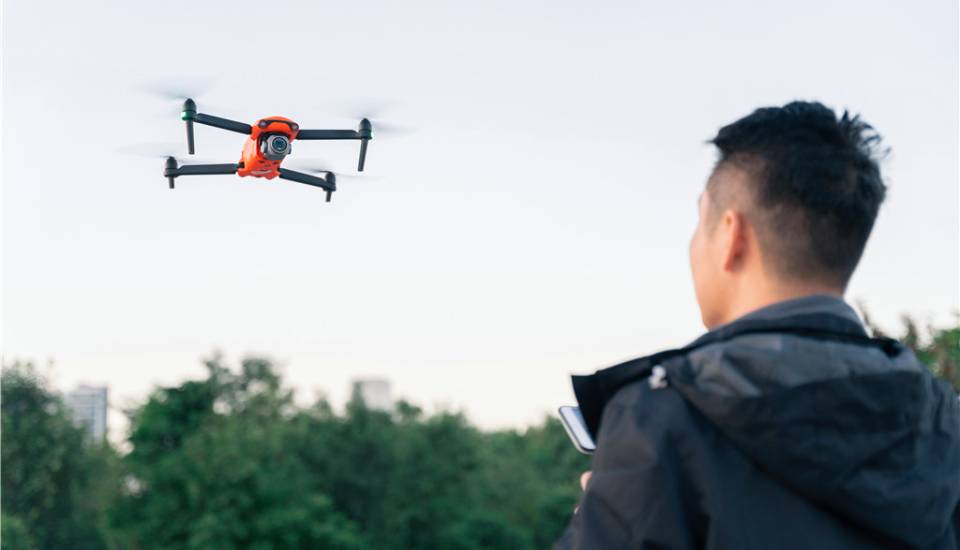Whether they are drone beginners or experienced drone pilots, they have more or less heard the 400-foot height limit. Where did the 400-foot rule come from, and why is it 400 feet? We'll cover that in detail in this article!
How high can I fly my drone?
How high a drone can fly depends on two factors, one is how high the drone itself can fly, and the other is how high the drone can fly within the specified range.
Autel drones can fly up to 800 meters (2624.6 feet), and DJI drones can fly up to 500 meters (1640.4 feet). These powerful consumer drones can fly well above the 400-foot regulation.
400 feet is indeed a hard and fast rule, and it is important for drone pilots to follow the FAA regulations and keep their drones operating below 400 feet.

Where did the 400-foot rule for drones come from?
First of all, aviation safety is a very serious matter. Drones should avoid interfering with manned aircraft and military aircraft exercises.
400 feet is the maximum altitude the FAA allows sUAS (Small Unmanned Aircraft Systems), or unmanned aircraft, to operate so as not to interfere with other aircraft in the sky. This keeps the drone at a safe distance from planes, helicopters and other aircraft systems and helps prevent collisions.
Is 400 feet enough for drone shots?
Consumer drones are often used for personal hobbies or documenting life. Commercial drone cameras, on the other hand, are more powerful and sharper, providing a wide view of the land below and an excellent view of the landscape and terrain.
Commercial drones can also be used in residential real estate, commercial real estate, construction progress updates, search and rescue, and thermal imaging images. For drone applications in the public safety sector, flying at an altitude of 400 feet is sufficient. At the same time, most commercial drones also support optical zoom, which can better expand the drone's field of vision.

Is it possible to fly above 400 feet?
Drone pilots are permitted to fly up to 400 feet above the top of the tallest building within a 50-foot radius of their operations. Therefore, to fly above 400 feet, it is important to consider not only the altitude at which the drone is flown, but also the starting altitude of the drone pilot. If you're flying over mountains, chances are, your starting altitude is over 400 feet. So it's certainly possible for you to fly above 400 feet.
How do I stay within the 400-foot limit?
400 feet is a mandatory range that every driver should abide by. Generally speaking, most consumer drone brands set altitude limits for their drones. Once the altitude limit is reached, the drone will no longer ascend.
How high is 400 feet?
Looking at this number in isolation might be less than intuitive. We'll be showing drone aerial photos at different altitudes, here you can see a baseball field captured at 50ft, 100ft, 150ft, 200ft, 300ft and 400ft.

Do I have to be certified to fly commercially?
The FAA Part 107 exam is for drone users who plan to use their drones for commercial purposes. In other words, if you plan to make money with drones, you must take the FAA exam and become certified. The FAA Part 107 exam will cover topics such as FAA regulations, weather, radio communications, drone assembly techniques, the National Airspace System, and more.
How high can drones fly in different countries?
Drones are regulated by laws and regulations in most countries, and the flight height limit of 400 feet (about 120 meters) above the ground seems to be a universal altitude limit, which is used to maintain airspace safety.
Here, we collect statistics on the flight height restrictions of drones in various countries.
| Country | Drone Flying Height Limit | Drone Altitude Authority |
|---|---|---|
| Argentina | 400 feet (120 meters) | National Civil Aviation Administration (ANAC) |
| Australia | 400 feet (120 meters) | Civil Aviation Safety Authority (CASA) |
| Brazil | 400 feet (120 meters) | National Civil Aviation Agency (ANAC) |
| Canada | 400 feet (120 meters) | Transport Canada |
| China | 400 feet (120 meters) | Civil Aviation Administration of China (CAAC) |
| France | 492 feet (150 meters) | Directorate General for Civil Aviation (DGAC) |
| Germany | 230 feet (70 meters) | Federal Aviation Office (LBA) |
| India | 400 feet (120 meters) | Directorate General of Civil Aviation (DGCA) |
| Indonesia | 500 feet (150 meters) | Directorate General of Civil Aviation (DGCA) |
| Italy | 492 feet (150 meters) | National Civil Aviation Authority (ENAC) |
| Japan | 492 feet (150 meters) | Ministry of Land, Infrastructure, Transport, and Tourism (MLIT) |
| Mexico | 492 feet (150 meters) | Directorate General of Civil Aeronautics (DGAC) |
| Netherlands | 400 feet (120 meters) | Human Environment and Transport Inspectorate |
| Poland | 492 feet (150 meters) | Civil Aviation Authority (CAA) |
| Russia | 492 feet (150 meters) | Federal Air Transport Agency (Rosaviatsiya) |
| South Africa | 400 feet (120 meters) | South African Civil Aviation Authority (SACAA) |
| Spain | 384 feet (120 meters) | State Agency for Aviation Safety (AESA) |
| Turkey | 400 feet (120 meters) | Directorate General of Civil Aviation (DGCA) |
| United Kingdom | 400 feet (120 meters) | Civil Aviation Authority (CAA) |
| Panama | 400 feet (120 meters) | Civil Aviation Authority (AAC) |








